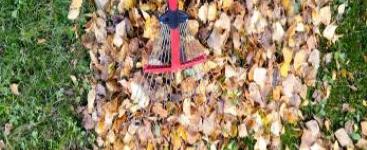
How to Properly Care For a Lawn
When it comes to lawn care, it’s important to follow a consistent schedule so you can keep your grass looking lush and healthy. But it’s also important to pay attention to the weather and adjust your mowing and watering schedule accordingly.
In addition, you can improve your lawn’s health by removing thatch and aerating the soil. This will allow air, water, and nutrients to reach your grass’s roots.
Watering
Watering your lawn is an essential part of maintaining a healthy, beautiful lawn. Without proper watering, your grass will wither and become brown or dry, making it difficult to maintain.
When watering your lawn, you need to be careful not to overdo it or cause runoff that can damage the soil and other plants nearby. You also need to water deeply enough to ensure the top 6-8 inches of soil is moist, but not soggy.
This amount of water will depend on the type of soil you have and the weather conditions in your area. Sandy soils, for example, leach water quickly, so they need to be watered more frequently than clay-based soils that retain water.
You should also water your lawn in the early morning, when the air is cooler and winds are calmer, allowing the water to soak into the ground before the sun is up and evaporation starts. This is also the best time to water newly seeded or sodded turf because it gives the new grass roots a chance to establish their footholds in the soil.
Generally speaking, 1 to 1.5 inches of water per week will suffice for most lawns, but it will vary by soil type. You can either apply the water during a single watering or divide it into two waterings throughout the week, which will encourage stronger root development and drought-resistance.
You may also want to water your lawn in the fall, when you are preparing it for winter. This will help to keep the top inch of soil consistently moist and give it a chance to store water for use during colder months.
Fertilizing
When you fertilize your lawn, you're giving it a burst of nutrients that will help it thrive. Fertilizers are made with a specific combination of nitrogen, phosphorus, and potassium, which are all key nutrients that promote healthy grass growth.
Nitrogen is the most important nutrient, as it helps your grass develop strong, thick blades and a deep root system that can help it survive harsh conditions like drought. The amount of nitrogen you need to apply depends on the type of grass you have and the soil it's growing in.
You should also use a soil test kit to check the nutrient content of your lawn's soil before you apply fertilizer. This will ensure you're using the right type of fertilizer for your soil.
Most fertilizers have a nutrient number that describes the percentage of each nutrient in the formula. For example, Scott's Turf Builder has a 32-0-4 number, which means the bag contains 32% nitrogen, 0% phosphorus, and 4% potassium.
To properly fertilize your lawn, you'll need a lawn spreader and the right fertilizer for your grass type. Follow the directions on the bag to determine how much fertilizer you need for your lawn.
Depending on your lawn's type, it will need to be fertilized in the spring or fall. Cool-season grasses, such as Bermuda, zoysia, and centipede, should be fertilized in the early spring when the ground temperature is still mild.
Autumn is a great time to fertilize because it provides your grass with an extra boost of nutrients before winter hits. This will help it recover from the stresses of the summer and prepare for a successful, lush spring.
It's a good idea to water your lawn after fertilizing to make sure it gets all of the essential nutrients it needs for healthy, green growth. Don't water too often, though, as this encourages shallow roots that can lead to stress and disease. Instead, water lightly and deeply a few times a week to give your grass the moisture it needs to thrive.
Mowing
Mowing a lawn is a weekly chore for most homeowners, but the right way to mow can make the difference between an average-looking yard and a healthy, attractive one. A well-managed lawn not only looks great, but also is healthier and more disease resistant than a neglected yard.
A properly mowed lawn helps to keep the grass blades from becoming clogged with thatch, which reduces water retention and prevents soil compaction. Frequent mowing can also help to reduce weeds and encourage nutrient uptake in the soil.
As with any other lawn care chore, you need to use your judgment when deciding how often and how to cut the grass. Avoid mowing too frequently or too short, which can create conditions that encourage weed growth and soil erosion.
You should also only remove about one-third of the height of the grass. Cutting away too much in a single mow severely damages the roots of the grass and causes stress to the lawn.
In addition, if you cut too short, the grass can be more easily damaged by sunlight and other elements. The result is a patchy and uneven appearance that can promote weeds, diseases, and insects.
To maintain a healthy, low-maintenance lawn, you should cut your grass at least once a week in the summer and every two weeks during spring, autumn, and warm winters. Regular trimming encourages the roots of the grass to spread, which fills gaps and block weeds from germinating and growing.
A healthy, beautiful lawn can improve the appearance of your home and add a sense of pride to your property. While mowing is not the most important part of maintaining your lawn, it should be done with consideration to your specific grass type and climate.
Weeding
Even for the most meticulous gardener, weeds will appear and infiltrate your landscape. They can be a nuisance, especially if they are overgrown or invasive. However, there are steps you can take to properly weed your lawn so it remains healthy and attractive.
Weeding can be a time-consuming chore, but it's important to do it regularly. This can prevent weeds from taking over your entire yard, and it can help keep them in check when they do.
Depending on the type of weed you are dealing with, there are different methods for removing it. For example, if you are dealing with grassy weeds, you can simply pull the leaves off of the plant, but if you're dealing with broadleaf weeds, you may need to dislodge them by breaking their stems.
When weeding your lawn, it's important to remove the weed while it is young and in growth. Most weeds spread by producing seeds that can germinate in the soil, so you need to remove them before they set these seeds.
Another way to keep weeds at bay is to apply a thick layer of mulch. This will prevent the weed seeds from germination, and it will also help retain moisture in your lawn.
If you do need to spray your lawn for weed control, be sure to follow the manufacturer's instructions. This is particularly important if you're using pre-emergent herbicide, which should be used before weeds germinate in the soil.
Finally, don't forget to thoroughly clean all your equipment before you use it again, including your sprayer. Keeping your sprayer and hoses clean will ensure you get the job done safely, and it will allow you to avoid any environmental hazards.
Mulching
Mulching your lawn is a simple yet effective way to make it look beautiful and improve the health of the plants in your yard. It also makes the grass easier to manage.
Regardless of the type of mulch you choose for your lawn, it must be spread evenly and reapplied frequently to ensure that the soil retains moisture and prevents erosion. It can be made of a wide range of materials, from wood and bark to rubber and pebbles.
For many gardeners, mulching is a fun and rewarding project. It also provides a decorative touch to flower beds, shrubs and trees that enhances curb appeal.
Before spreading any mulch, edge the area to be covered to keep it from spilling onto the surrounding grass. You can also create a barrier with stones or bricks.
Then, put down a thin layer of mulch on top of the soil and spread it evenly with your hands or a shovel. It's important to keep the mulch a few inches from the roots of the plants you are planting.
If you are using organic mulch, such as bark, shredded wood or pine needles, the nutrient content of the mulch improves the soil. They also help to keep the ground cool and reduce weed growth.
Another benefit of mulching is that it reduces the amount of green waste you have to dispose of. This helps you save money on your landscaping and keeps the waste away from landfills.
Grass clippings are a great natural fertilizer for the soil and can be used as mulch if the grass is growing well. However, if your lawn is overgrown with weeds, you may want to bag the clippings rather than mulch them. This will keep them from sprouting and forming clumps in the soil, which can cause soil erosion.

Lawn Mowing
We service both Commercial and Residentual clients

Lawn Care
We offer weed whipping, edging, hedging, pruning & mulching services.

Spring & Fall Cleanup
Need your yard and property cleaned-up for the spring or fall? Call us today!

Snow & Ice Removal
Snow and Ice removal services can be customized to fit your level of need.